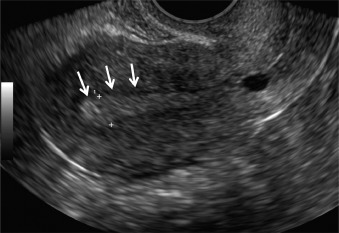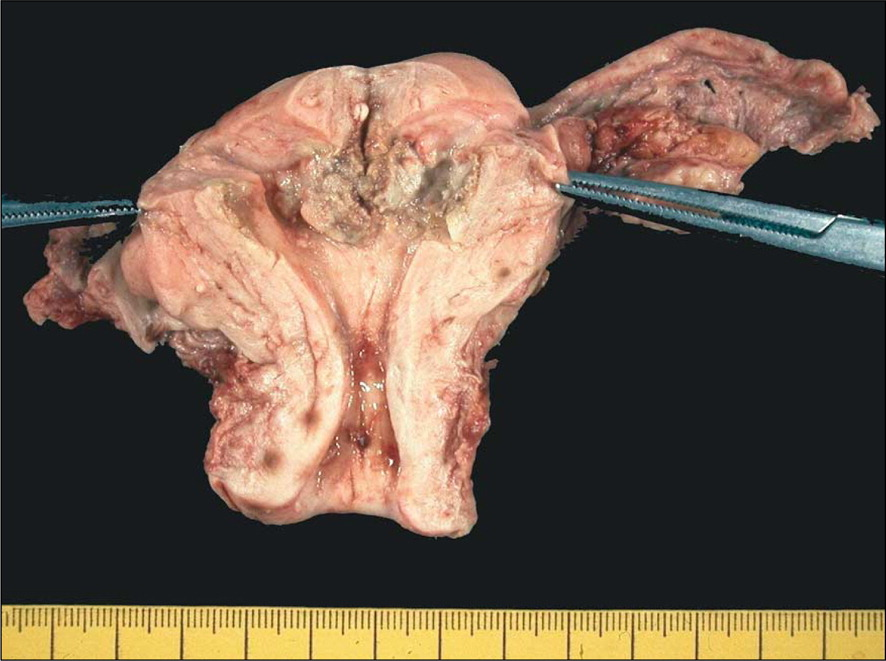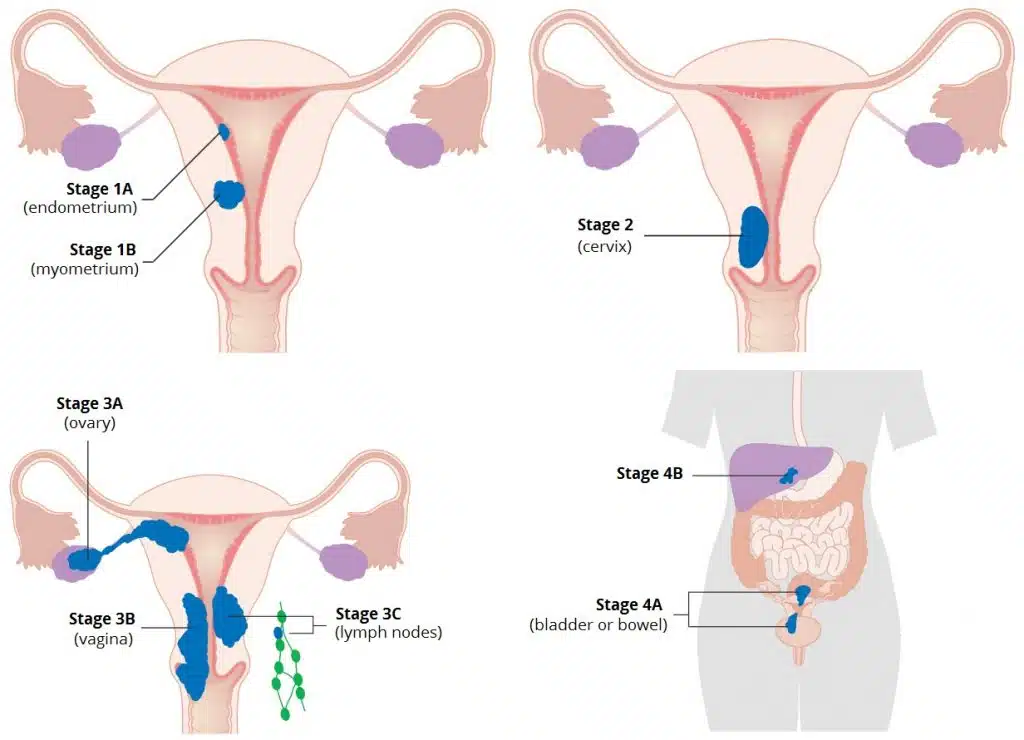Endometrial cancer is the most common cancer of the female genital tract and the fourth most common cause of cancer overall in women. 3% of women will develop endometrial cancer in their lifetime. 75% of endometrial cancers are adenocarcinomas (arising from endometrial hyperplasia caused by a hyperestrogenic environment). The incidence is higher in white women, but black women have a higher mortality
The most common presentation of endometrial carcinoma is abnormal uterine bleeding (post-menopausal bleeding)
- Risk factors for endometrial carcinoma
- Hyperestrogenism
- High-dose menopausal estrogen (10-20x RR)
- Obesity (2-4x)
- Nulliparity (2x)
- Early menarche
- Late menopause (2x)
- Use of tamoxifen (2-3x)
- PCOS (3x)
- Medical conditions
- T2DM (2x)
- Hypertension
- Gallbladder disease
- Lynch syndrome (22-50% lifetime risk)
- Higher SES (1.5-2x)
- Older age
- Living in North America or Northern Europe (3-18x)
- Hyperestrogenism
- Histologic variants of endometrial cancer
- Endometrial adenocarcinoma (75%) – most common
- Serous carcinoma (5-10%) – some are HER2/Neu positive, studies are underway for using Trastuzumab
- Clear cell carcinoma (<5%)
- Mucinous carcinoma (1-2%)
- Mixed type (10%)
- Undifferentiated (rare)
- Squamous cell carcinoma (extremely rare)
| Type I | Type II | |
|---|---|---|
| Unopposed estrogen | Present | Absent |
| Estrogen responsive | Yes | No |
| Rate of growth | Slow | Rapid |
| Precursor lesion | Atypical hyperplasia | Atrophic epithelium, Endometrial intraepithelial carcinoma |
| Histology | Endometrioid | Serous, clear cell |
| Grade | Low | High |
| Depth of invasion | Superficial | Deep |
| Age at diagnosis | Younger | Older |
| Prognosis | Better | Worse |
| Genetic changes | PTEN, KRAS | p53, HER2/Neu (serous) |
- Patient History
- Use of post-menopausal estrogen supplements
- Use of Tamoxifen
- Nulliparity
- Early onset of menarche and Late menopause
- Family History of malignancies (Lynch syndrome etc.)
- Ensure that pap smear is up to date
- Signs and Symptoms
- Abnormal uterine bleeding
- Post-menopausal women: Post-menopausal bleeding
- Pre-menopausal women: Menorrhagia, Intermenstrual spotting
- Abnormal uterine bleeding
- Physical Exam
- Pelvic exam (bimanual and speculum): feel for masses (fibroid, polyps, ovarian tumours), exclude lacerations, foreign bodies, cervical cancer
- Investigations
- Confirm diagnosis
- Transvaginal ultrasound
- Thickened endometrial stripe
- Endometrial biopsy: for postmenopausal women and premenopausal women with risk factors for endometrial cancer
- Transvaginal ultrasound
- Labs
- Qualitative hCG
- CBC
- TFTs
- Staging
- Total Abdominal Hysterectomy + Bilateral Salpingoophorectomy (TAH + BSO)
- Peritoneal washings
- Pelvic and Para-aortic lymphadenectomy
- Metastasis
- CXR
- LFTs
- Prognosis and response to treatment
- CA-125 levels
- Confirm diagnosis
- Treatment
- TAH + BSO
- Further treatment
- Stage I: None
- Stage II: Radiation (controversial)
- Stage III and IV: chemotherapy and radiation
- TAP (Paclitaxel, Adriamycin, Cisplatin)
Staging of endometrial carcinoma
| Stage | Description | % at diagnosis | 5-year survival |
|---|---|---|---|
| Stage I | Tumor confined to the corpus uterus (endometrium and myometrium) | 75% | |
| IA | < 50% myometrial invasion | 88-91% | |
| IB | ≥ 50% myometrial invasion | 75-88% | |
| Stage II | Tumor invades cervical stroma but does not extend beyond the uterus | 25% | 67-77% |
| Stage III | Local and/or regional spread of the tumor | ||
| IIIA | Invades the serosa, adnexae, or peritoneum | 58-60% | |
| IIIB | Vaginal and/or parametrial involvement | 41-50% | |
| IIIC | Metastasis to pelvic or para-aortic nodes | 32-47% | |
| Stage IV | Metastasis to bowel, bladder, or beyon | ||
| IVA | Metastasis to bowel or bladder mucosa | 17-20% | |
| IVB | Distant metastasis including abdominal structures and/or inguinal nodes | 5-15% |



